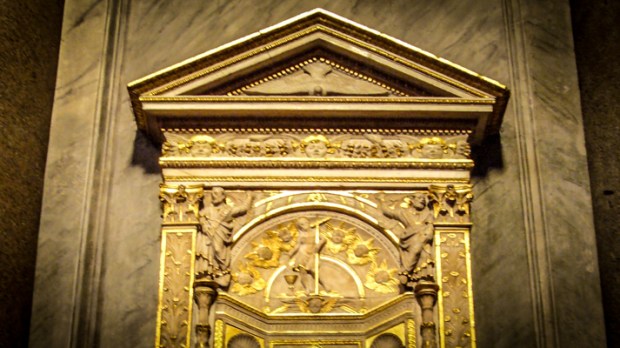Lenten Campaign 2025
This content is free of charge, as are all our articles.
Support us with a donation that is tax-deductible and enable us to continue to reach millions of readers.
While typically most Catholic churches (especially churches built in the past 30 years) have a single tabernacle, you will frequently find in older churches a second gold box located near the tabernacle in the sanctuary.

Read more:
What is a tabernacle in the Catholic Church?
What is it? Is it some sort of second tabernacle?
The second gold box is not another tabernacle, but it does hold three very sacred items. The box is called an ambry, from the Latin armarium; a type of small closet or cupboard. It holds three holy oils that are used for various sacraments. These oils are blessed once a year by the bishop at what is called the Chrism Mass during Holy Week, and then distributed to all the parishes in his diocese.
The first oil blessed is the Oil of Catechumens, which is used to anoint those to be baptized into the Catholic faith.
The second oil is the Sacred Chrism, commonly used immediately after Baptism, but also at Confirmation and Holy Orders.
The last oil blessed by the bishop is the Oil of the Infirm and is used by priests for the Anointing of the Sick. The containers that hold the oils are often marked with the abbreviations O.C., S.C., and O.I.

Read more:
What is the Apostolic Pardon and why is it important?
Since these oils are rare and consecrated for a specific purpose, the parish priest needed to keep them in a safe place. Over time the ambry was developed and became a locked cupboard that kept them secure, while respecting their sacred purpose.
Typically the ambry is marked with the Latin words, olea sancta, “holy oils,” to denote what it contains. In modern churches the traditional ambry has been replaced by custom cabinets with glass panes so that the faithful can see the oils.

Read more:
Why do Catholics genuflect in a church?

